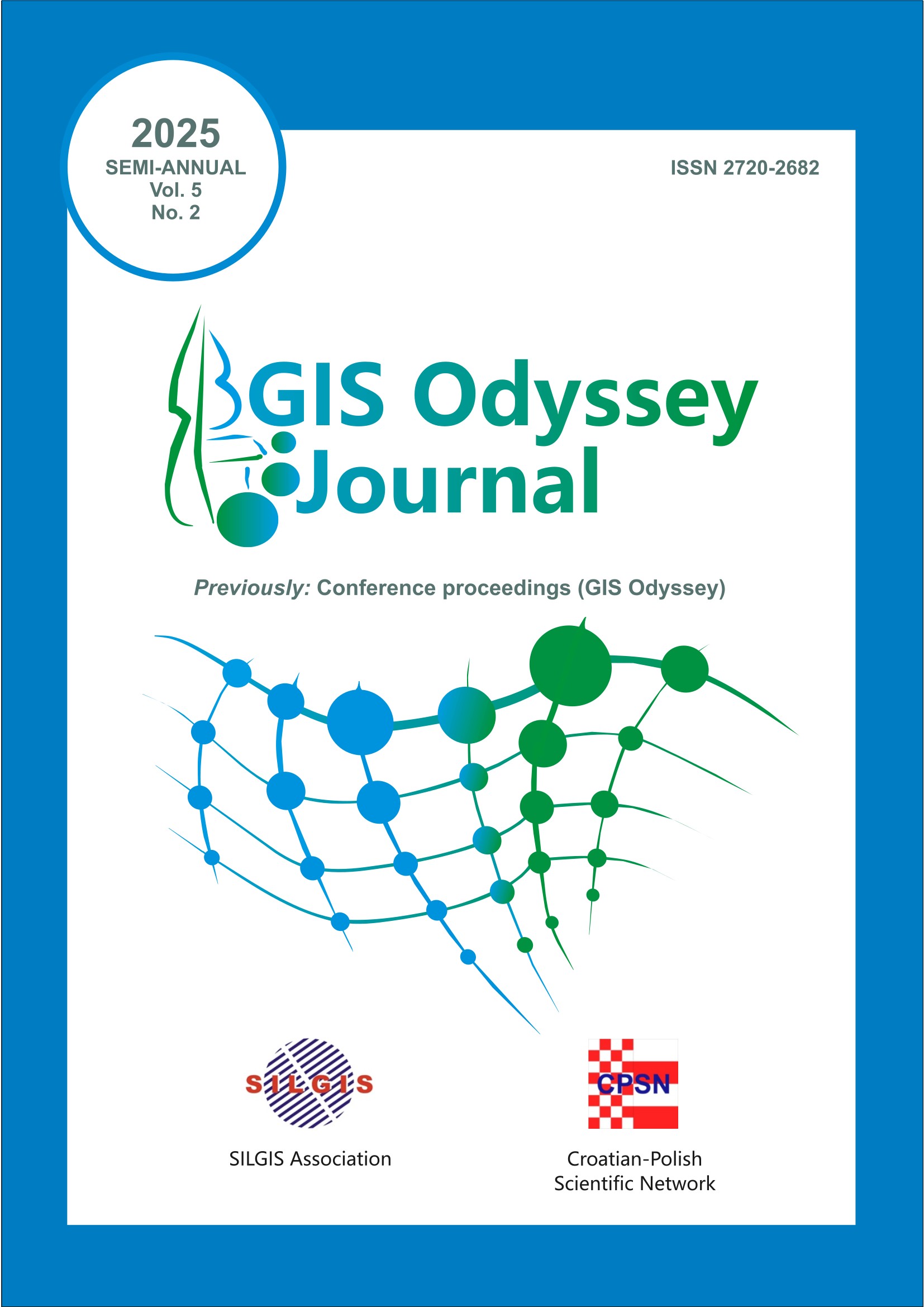HISTORICAL SETTLEMENT PATTERN OF ANJUNAD: AN EXPLORATORY ANALYSIS USING GIS
DOI:
https://doi.org/10.57599/gisoj.2025.5.2.175Keywords:
agrarian history, anjunad, historical settlement, migration studies, settlement pattern analysis, vellalarAbstract
In ancient and medieval Tamil Nadu, the territorial unit nadu played an important role in the administration of the state. In brief, it was the supra-village-unit, primarily consisting of ur villages or agrarian settlements, where Vellala landholders functioned their assembly. However, the historical role of nadu has ended by the end of the fifteenth century C.E. Interestingly, the settlement of Vellalar in the five ur villages, collectively known as Anju (Five in Tamil) nadu (Anjunad) found in the valley region between the Western Ghats and the Palani hills of the southern part of India. They claim their migration from Madurai in time immemorial, which needs further study to fix the migration and settlement chronologically. However, to understand the underlying influences of the environment in the choice of the areas for the settlement of the villages, settlement pattern analysis has been done by using GIS. An investigation has been done on the villages of Anjunad with relation to their geospatial information of their distribution, route, elevation, soil types, slopes and water sources for deriving the similarities among them by using QGIS Open Source Software, version 3.38.1. The results contribute to inferring the settlement history of Anjunad in relation to the environmental conditions.
Downloads
Published
How to Cite
Issue
Section
License
This is an open access publication, which can be used, distributed and reproduced in any medium according to the Creative Commons CC-BY 4.0 License.







